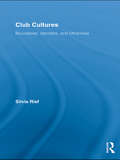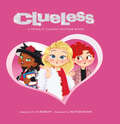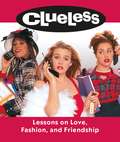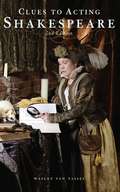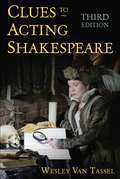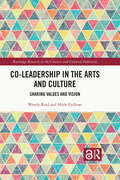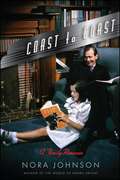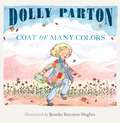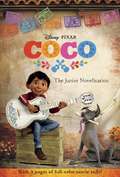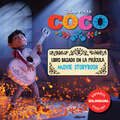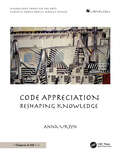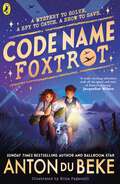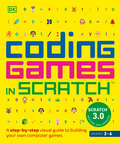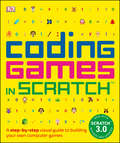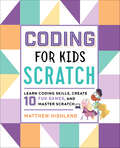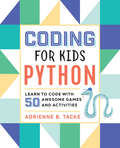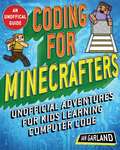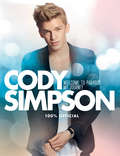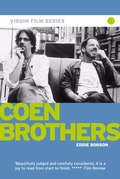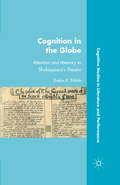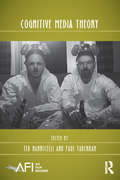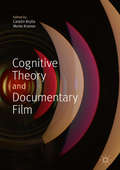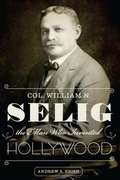- Table View
- List View
Club Cultures: Boundaries, Identities and Otherness (Routledge Advances in Sociology)
by Silvia RiefThis book explores contemporary club and dance cultures as a manifestation of aesthetic and prosthetic forms of life. Rief addresses the questions of how practices of clubbing help cultivate particular forms of reflexivity and modes of experience, and how these shape new devices for reconfiguring the boundaries around youth cultural and other social identities. She contributes empirical analyses of how such forms of experience are mediated by the particular structures of night-clubbing economies, the organizational regulation and the local organization of experience in club spaces, the media discourses and imageries, the technologies intervening into the sense system of the body (e.g. music, visuals, drugs) and the academic discourses on dance culture. Although the book draws from local club scenes in London and elsewhere in the UK, it also reflects on similarities and differences between nightclubbing cultures across geographical contexts.
Clueless: A Totally Classic Picture Book
by Amy HeckerlingThis illustrated storybook captures the unforgettable fashions, vocabulary, and characters of the iconic 1995 film Clueless with an adorable kid-friendly adaptation about making friends.Cher and Dionne are the coolest kids at Bronson Alcott Elementary School in Beverly Hills. When a new -- very unique, grunge-chic, and possibly clueless -- girl named Tai comes along, Cher and Dionne take her under their wings. They tell her how to dress and what hobbies to take up to be a part of their friend group. But Tai really likes skateboarding, baggy clothes, and wants to hang out more with the group of skateboarders. Cher and Dionne try a variety of ways to change Tai, alongside a cast of characters including Murray, Amber, Travis, Summer, Elton, and Miss Geist. But in the end, they realize that people are different and that's what makes them so cool!
Clueless: Lessons on Love, Fashion, and Friendship (RP Minis)
by Lauren MancusoQuick tips, quotes, and full-color photos highlight this fabulous gift book inspired by the classic teen comedy Clueless (1995).Learn how to navigate the world with life lessons inspired by the most glamorous high-schooler in Beverly Hills, Cher Horowitz, her BFF Dionne, new pal Tai, and the entire crew from the greatest teen comedy of the '90s, Clueless. This mini book is filled with advice, quick tips, and quotes on dating, fashion, friendship, giving back, and so much more -- all illustrated with full-color photos from the movie throughout.
Clueless: Totally Delicious Recipes Inspired by the Film
by Kim LaidlawClueless comes to the kitchen with this officially licensed cookbook, featuring 50 totally delicious recipes, iconic movie quotes, full-color images from the film, and much more. Use it to make your &’90s-themed gatherings even more legit, or for meal ideas anytime you&’re feeling a little clueless. Witty, charming, privileged Cher Horowitz leads the pack at her Beverly Hills high school in Amy Heckerling&’s cult classic Clueless. Through the eyes of style-obsessed Cher, we join in the fun of makeovers, the rollercoaster ride of crushes and friendships, and the social hierarchy of high school. Inspired by the snacks, drinks, and meals highlighted throughout the film, the Southern California healthy eating craze, and the best of the 1990s, the recipes in this official cookbook are tribute to the adventures and calamities of Cher, Dionne, Tai, Murray, Josh, Travis, and all the rest of our favorite Clueless characters. From take-it-with-you options like Gnarly Skateboarder&’s Breakfast Sandos to homemade versions of snack foods that litter the lunch tables at Cher&’s school (Off-the-Diet Popcorn, anyone?), the recipes in this cookbook bring the personalities and narrative of Clueless to life. Some of the featured recipes include: Beverly Hills Yogurt Parfaits Party in the Valley Pretzel Bites Family Dinner Rosemary Focaccia Gooey Baked Brie with Crudites Total Betty Turkey &“Bacon Experience&” BLTA So-Lo-Cal Chopped Chicken, Avocado, and Herb Salad Totally Not Buggin&’ Baked Goat Cheese Salad with Herb Vinaigrette and Crostini Chuckleheads Asparagus Quiche Grade-Changing Grilled Spinach Pesto Chicken Breasts Extra Credit Steak Caesar Avocado Wrap Tai Lattice Peach Pie Cute Plaid Lemon Sugar Cookies Full-on Monet Raspberry Vanilla Fro-Yo Not-the-Mall-Food-Court Smoothies Root Beer &“Pool Party&” Floats Perfect for families and fans of the film, Clueless: The Official Cookbook is a celebration of the '90s and a tribute to an enduring comedy. So dive in, eat up, and enjoy!
Clues to Acting Shakespeare
by Wesley Van Tassel"A workhorse of a workbook!"-Library Journal. American actors, fear Shakespeare no more! Through a series of inspiring, easy-to-follow exercises, an acclaimed director and drama coach shows both students and experienced actors how to break down the verse, support the words, understand the images, and use the text to create vibrant, living performances. This popular guide-more than TK,000 copies sold-has been revised and expanded to include the unique challenges facing teachers and their students in performing Shakespeare's works, as well as time-tested tools for overcoming these obstacles. Effective delivery, correct breathing, scansion, phrasing, structure and rhythm, caesura, and more are covered. For text analysis and character interpretation, both classical British training and American methods are explored. In addition to ongoing, long-term practice exercises, Clues to Acting Shakespeare offers a one-day brush-up section to prep actors cast to play Shakespearean roles immediately. Long term practice exercises and quick one-day brush-ups for auditions
Clues to Acting Shakespeare
by Wesley Van TasselClues to Acting Shakespeare has become a popular guide for actors, directors, teachers and Shakespeare enthusiasts, selling over 15,000 copies of previous editions. This third edition retains the second edition’s unique solutions to challenges that face directors and actors at advanced levels and is expanded to include an entirely new section for amateur and community theatre groups. In this new edition, readers will be delighted to find: New section to aid community theatres to perform Shakespeare’s plays, including five recorded workshops of community theatre actors coached and trained by the author Updates to the successful sections on training student actors (MFA and BFA programs), and professional actors (including audition tips)—highlighted by twenty author-coached workshops with professional and advanced student actors Improved section for teachers of high school and child actors with worksheets and sample lesson plans New exercises and resources for all levels of acting and production To aid professionals, Clues to Acting Shakespeare offers a one-day brush-up for auditions and preparation to play Shakespeare immediately. Text analysis, character studies, and both classical British training and American methods are explored. The exercises and recorded workshops provide inspiring advice to all actors and demonstrate concepts discussed throughout the book. The critical skills required for acting Shakespeare, including scansion, phrasing, caesura, breathing, speech structure, antithesis, and more are covered in detail. The comprehensive exercises using the Bard’s plays and sonnets teach actors to break down the verse, support the words, understand the imagery, and use the text to create vibrant performances.
Co-Leadership in the Arts and Culture: Sharing Values and Vision (Routledge Research in the Creative and Cultural Industries)
by Wendy Reid Hilde FjellværThis book is about co-leadership: a leadership practice and structure often found in arts organizations that consists of two or three executives who bridge the art and business divide at the top. Many practitioners recognize this phenomenon but the research on this topic is limited and dispersed. This book assembles a coherent overview and presents new insights of the field. While co-leadership is well institutionalized in the West, it is also criticized for management’s constraint of artistic autonomy and for its pluralism that dilutes leadership clarity. However, co-leadership also personifies the strategic objectives of art, audiences, organization, and community, by addressing plural logics - navigating the demands of artistic vision and organizational stability. It is an integrating solution. The authors investigate its specifics in the arts, including global practice and its interdisciplinary nature. The theoretical frame of plural leadership supports their empirical explorations of the dynamics within the co-leadership relationship and with organizational stakeholders. Data includes the voices of co-leaders, artists, staff, and board members from arts organizations in Canada and Norway. Their abductive reflection generates a stimulating research experience. By viewing co-leadership in action, not as a study of static theories, the book will appeal not only to students and researchers but also resonate with practitioners in arts and cultural management and assist them to work with co-leadership and to manage its tensions.
Co-Leadership in the Arts and Culture: Sharing Values and Vision (Routledge Research in the Creative and Cultural Industries)
by Wendy Reid Hilde FjellværThis book is about co-leadership: A leadership practice and structure often found in arts organizations that consist of two or three executives who bridge the art and business divide at the top.Many practitioners recognize this phenomenon but the research on this topic is limited and dispersed. This book assembles a coherent overview and presents new insights of the field. While co-leadership is well institutionalized in the West, it is also criticized for management’s constraint of artistic autonomy and for its pluralism that dilutes leadership clarity. However, co-leadership also personifies the strategic objectives of art, audiences, organization, and community, by addressing plural logics – navigating the demands of artistic vision and organizational stability. It is an integrating solution. The authors investigate its specifics in the arts, including global practice and its interdisciplinary nature. The theoretical frame of plural leadership supports their empirical explorations of the dynamics within the co-leadership relationship and with organizational stakeholders. Data includes the voices of co-leaders, artists, staff, and board members from arts organizations in Canada and Norway. Their abductive reflection generates a stimulating research experience.By viewing co-leadership in action, not as a study of static theories, the book will appeal not only to students and researchers but also resonate with practitioners in arts and cultural management and assist them to work with co-leadership and to manage its tensions.Chapters 1 and 4 of this book are freely available as downloadable Open Access PDFs at http://www.taylorfrancis.com under a Creative Commons Attribution-Non Commercial-No Derivatives (CC-BY-NC-ND) 4.0 license.
Coast To Coast: A Family Romance
by Nora Johnson Ellen R. SasaharaNora Johnson was a young child when her parents' marriage collapsed. Her father, Nunnally Johnson, the writer, producer, or director of many acclaimed movies, such as The Grapes of Wrath and The Dirty Dozen, remained in California, where he would continue to be a major Hollywood presence for more than three decades. Nora's mother, Marion, a beautiful but unsettled woman, took her to New York to start a new life -- one surrounded by her mother's lovers and eccentric literary friends instead of movie stars ...
Coat of Many Colors (Trophy Picture Bks.)
by Dolly PartonDolly Parton lends the lyrics of her classic song "Coat of Many Colors" to this heartfelt picture book for young readers.Country music legend Dolly Parton's rural upbringing in the Smoky Mountains of Tennessee provides the backdrop for this special picture book. Using lyrics from her classic song "Coat of Many Colors," the book tells the story of a young girl in need of a warm winter coat. When her mother sews her a coat made of rags, the girl is mocked by classmates for being poor. But Parton's trademark positivity carries through to the end as the girl realizes that her coat was made with love "in every stitch." Beautiful illustrations pair with Parton's poetic lyrics in this heartfelt picture book sure to speak to all young readers.
Coco Junior Novelization
by Angela CervantesCoco: The Deluxe Junior Novelization retells the whole exciting movie and features eight pages of full-color in this deluxe hardcover novel. Despite his family's baffling generations-old ban on music, Miguel (voice of newcomer Anthony Gonzalez) dreams of becoming an accomplished musician like his idol, Ernesto de la Cruz (voice of Benjamin Bratt). Desperate to prove his talent, Miguel finds himself in the stunning and colorful Land of the Dead following a mysterious chain of events. Along the way, he meets charming trickster Hector (voice of Gael García Bernal), and together, they set off on an extraordinary journey to unlock the real story behind Miguel's family history. Directed by Lee Unkrich (Toy Story 3), co-directed by Adrian Molina (story artist Monsters University), and produced by Darla K. Anderson (Toy Story 3), Disney/Pixar's Coco opens in U.S. theaters on November 22, 2017.
Coco Movie Storybook / Libro basado en la película (English-Spanish)
by Disney Book GroupExperience Disney•Pixar's Coco like never before in this English-Spanish bilingual storybook. Miguel sueña con llegar a ser un músico famoso como Ernesto de la Cruz, pero su familia se lo prohíbe. Cuando se halla en la Tierra de los Muertos, descubre la verdadera historia de su familia. Miguel dreams of becoming a famous musician like Ernesto de la Cruz, but his family forbids it. So when he finds himself in the Land of the Dead, he sets off to discover his family’s true history.
Code Appreciation: Reshaping Knowledge
by Anna UrsynLike art appreciation and music appreciation, this code appreciation book invites the readers to look relaxedly into major programming concepts used in many disciplines through short stories set in alphabetical order. Some students fear technology with programming behind it, and shy away from the word "coding." Coding has become common and needed, and these stories are set to help non-coders lose their inhibition. It also might help with prompt writing. Many employers seek employees with experience in visual communication, technology, and storytelling skills. Most tasks are created through group efforts, so a better grasp of what other co-workers are doing speeds up the process.The book offers a new approach to storytelling by weaving coding into stories. Playfully, it encourages the readers to see computing as easier to understand and present in most disciplines. The book might benefit high school and middle school students, faculty, advisors, chancellors, and those seeking majors or passions. People interested in computer graphics, arts, graphic design, computer science, and others may gain a general understanding of how technology affects various disciplines and how everything is connected.This book is a part of the “Knowledge Through the Arts” series, consisting of:Dance Code — Dance Steps as a CodeNew Storytelling — Learning Through MetaphorsCode Appreciation — Reshaping KnowledgeNature Appreciation — Knowledge as Art
Code Name Foxtrot: Discover the unforgettable new adventure for 9-12 year olds
by Anton Du BekeAn unmissable, heartwarming adventure full of mystery, friendship, courage and dance – from Sunday Times bestselling author and ballroom star, Anton Du Beke! With gorgeous illustrations by Elisa Paganelli, Code Name Foxtrot is perfect for fans of Ben Miller, Emma Carroll and Michael Morpurgo. A MYSTERY TO SOLVE. A SPY TO CATCH. A SHOW TO SAVE. Maybe by Christmas, the war will be over and we’ll be back with Mum and Dad . . .London, 1940: the world is at war and 10-year-old twins Harry and Rosie are evacuated to live with their mysterious great uncle on the stormy Lancashire coast. Missing home, they throw themselves into the local dance show – determined to do their bit and maybe even dance at the famous Blackpool Winter Gardens. But when Harry sees strange lights out on the rocks one night, he and Rosie realize their new home is hiding some huge secrets. Racing to uncover the truth, the twins learn that bravery comes in many forms and even in the worst of times, the show must go on . . .‘An exciting adventure with all the speed and style of Anton’s dancing’ Jacqueline Wilson
Coding Games in Scratch
by Carol VordermanIf you like playing computer games, why not make your own? This book has all you need to build amazing games, including thrilling racing challenges, zany platform games, and fiendish puzzles.Follow the simple steps to become an expert coder, using the popular programming language Scratch™ 3.0. This updated edition is the first to be tablet-computer friendly, making it even easier to get coding.Improve your coding skills and create your own games, before remixing and customizing them. Jumpy Monkey will show you how to simulate gravity in your games, or give Dog's Dinner a try to learn about collision detection.Pick up the fundamentals of computer programming in steps that make even the most difficult coding concepts fun and easy to understand. Don't just learn how computer code works—understand why it's done that way.Then share your games online and challenge friends and family to beat each other's scores. Once you've whizzed through the book, the possibilities are endless!
Coding Games in Scratch: A Step-by-Step Visual Guide to Building Your Own Computer Games (DK Help Your Kids)
by Jon WoodcockScratch 3.0 has landed! Stay ahead of the curve with this fully updated guide for beginner coders.Coding is not only a highly sought-after skill in our digital world, but it also teaches kids valuable skills for life after school. This book teaches important strategies for solving problems, designing projects, and communicating ideas, all while creating games to play with their friends.Children will enjoy the step-by-step visual approach that makes even the most difficult coding concepts easy to master. They will discover the fundamentals of computer programming and learn to code through a blend of coding theory and the practical task of building computer games themselves. The reason coding theory is taught through practical tasks is so that young programmers don't just learn how computer code works - they learn why it's done that way. With Coding Games in Scratch, kids can build single and multiplayer platform games, create puzzles and memory games, race through mazes, add animation, and more. It also supports STEM education initiatives and the maker movement.Follow Simple Steps – Improve Your Skills – Share Your Games!If you like playing computer games, why not create your own? Essential coding concepts are explained using eight build-along game projects. Coding Games In Scratch guides young coders step-by-step, using visual samples, easy-to-follow instructions, and fun pixel art. This coding book for kids has everything you need to build amazing Scratch 3.0 games, including thrilling racing challenges, zany platform games, and fiendish puzzles. Follow the simple steps to become an expert coder using the latest version of the popular programming language Scratch 3.0 in this new edition. Improve your coding skills and create your own games before remixing and customizing them. Share your games online and challenge friends and family to beat each other's scores! In this book, you will: - Learn about setting the scene, what makes a good game and playability- Discover objects, rules, and goals- Explore hacks and tweaks, camera angles, fine-tuning and controls- And much moreComputer coding teaches kids how to think creatively, work collaboratively, and reason systematically, and is quickly becoming a necessary and sought-after skill. DK's computer coding books for kids are full of fun exercises with step-by-step guidance, making them the perfect introductory tools for building vital skills in computer programming. Add Coding Projects in Scratch and Coding Projects in Python to your collection.
Coding for Kids: Learn Coding Skills, Create 10 Fun Games, and Master Scratch
by Matthew HighlandLearn to code awesome games with Scratch—a fun starter guide for kids 6 to 10Explore basic coding concepts and skills and start creating your own games right away! Coding for Kids: Scratch is a complete guide that makes mastering the Scratch programming language fun and easy for kids.From sprites and code blocks to scripts and scorekeeping, Coding for Kids: Scratch helps you discover everything you need to know to create 10 amazing games that you and your friends can play. Watch your confidence grow with step-by-step instructions and clear directions that keep things simple—even as the games you're making get more challenging. Game on!Coding for Kids: Scratch includes:Coding for kids—Learn Scratch terms and concepts, then use them to build games you can start playing immediately.Create 10 games—Cake Clicker, Dino Hunt, Crystal Keeper, and more—code, play, and share 10 cool games.Master Scratch—Simple directions, full-color screenshots, and projects that get more difficult make practicing Scratch a breeze.Make coding for kids fun and games with Coding for Kids: Scratch.
Coding for Kids: Learn to Code with 50 Awesome Games and Activities
by Adrienne B. TackeGames and activities that teach kids ages 10+ to code with Python Learning to code isn't as hard as it sounds—you just have to get started! Coding for Kids: Python starts kids off right with 50 fun, interactive activities that teach them the basics of the Python programming language. From learning the essential building blocks of programming to creating their very own games, kids will progress through unique lessons packed with helpful examples—and a little silliness! Kids will follow along by starting to code (and debug their code) step by step, seeing the results of their coding in real time. Activities at the end of each chapter help test their new knowledge by combining multiple concepts. For young programmers who really want to show off their creativity, there are extra tricky challenges to tackle after each chapter. All kids need to get started is a computer and this book. This beginner's guide to Python for kids includes: 50 Innovative exercises—Coding concepts come to life with game-based exercises for creating code blocks, drawing pictures using a prewritten module, and more. Easy-to-follow guidance—New coders will be supported by thorough instructions, sample code, and explanations of new programming terms. Engaging visual lessons—Colorful illustrations and screenshots for reference help capture kids' interest and keep lessons clear and simple. Encourage kids to think independently and have fun learning an amazing new skill with this coding book for kids.
Coding for Minecrafters: Unofficial Adventures for Kids Learning Computer Code
by Ian GarlandLearn to Code while Adventuring through the Overworld!This fun and educational activity book Introduces kids to the world of coding through the Minecraft world they love. Colorfully illustrated characters and themes from their favorite video game bring the excitement of coding to life, while easy-to-follow screenshots guide them through activities. With adventures that include design, music, animation, gaming, and more, learners will discover tons of ways coding connects to other activities they love and how far a little imagination and invention can take them…to The End and beyond! Minecrafting-themed characters help kids become master coders Kid-friendly concepts and steps designed specifically for ages 8-12 Great games, mods, experiments, and more teach computational thinking—how to tackle large problems by breaking them down into a sequence of smaller, more manageable problems Whether brand-new to coding or looking for more hands-on learning, Coding for Minecrafters helps young coders advance in technology education by leaps and bounds—and have fun doing it!
Cody Simpson: My Journey
by Cody SimpsonThe first official all-access look into the life of singing sensation Cody Simpson. Follow Cody as he goes from singing cover songs in his bedroom to opening sold-out concerts for Justin Bieber. With never-before-seen photos, behind-the-scenes interviews, and exclusive information, this book is perfect for pop music fans and for Codys Angels.
Coen Brothers - Virgin Film (Virgin Film Ser.)
by Eddie RobsonJoel and Ethan Coen make up one of the most original and unconventional movie-making partnerships to come out of America at the end of the 20th century. From their debut tour de force Blood Simple to the hugely acclaimed The Man Who Wasn't There, the brothers' films have attracted critical kudos and commercial success in equal measure due to their irreverent, individual and technically virtuoso nature. Each of their films defies categorisation, yet you're never in any doubt you're watching a Coen brothers movie. This exploration of the movie career of Hollywood's best-loved outsiders charts their rise from cult favourites to box-office contenders, whilst combining indispensable reference material and critical analysis of their films.
Cognition in the Globe: Attention and Memory in Shakespeare’s Theatre (Cognitive Studies in Literature and Performance)
by Evelyn B. TribbleEarly modern playing companies performed up to six different plays a week and mounted new plays frequently. This book seeks to answer a seemingly simple question: how did they do it? Drawing upon work in philosophy and the cognitive sciences, it proposes that the cognitive work of theatre is distributed across body, brain, and world.
Cognitive Media Theory (AFI Film Readers)
by Ted Nannicelli Paul TaberhamAcross the academy, scholars are debating the question of what bearing scientific inquiry has upon the humanities. The latest addition to the AFI Film Readers series, Cognitive Media Theory takes up this question in the context of film and media studies. This collection of essays by internationally recognized researchers in film and media studies, psychology, and philosophy offers film and media scholars and advanced students an introduction to contemporary cognitive media theory—an approach to the study of diverse media forms and content that draws upon both the methods and explanations of the sciences and the humanities. Exploring topics that range from color perception to the moral appraisal of characters to our interactive engagement with videogames, Cognitive Media Theory showcases the richness and diversity of cognitivist research. This volume will be of interest not only to students and scholars of film and media, but to anyone interested in the possibility of a productive relationship between the sciences and humanities.
Cognitive Theory and Documentary Film
by Catalin Brylla Mette KramerThis groundbreaking edited collection is the first major study to explore the intersection between cognitive theory and documentary film studies, focusing on a variety of formats, such as first-person, wildlife, animated and slow TV documentary, as well as docudrama and web videos. Documentaries play an increasingly significant role in informing our cognitive and emotional understanding of today’s mass-mediated society, and this collection seeks to illuminate their production, exhibition, and reception. Taking an interdisciplinary approach, the essays draw on the latest research in film studies, the neurosciences, cultural studies, cognitive psychology, social psychology, and the philosophy of mind. With a foreword by documentary studies pioneer Bill Nichols and contributions from both theorists and practitioners, this volume firmly demonstrates that cognitive theory represents a valuable tool not only for film scholars but also for filmmakers and practice-led researchers.
Col. William N. Selig: The Man Who Invented Hollywood
by Andrew A. ErishAll histories of Hollywood are wrong. Why? Two words: Colonel Selig. This early pioneer laid the foundation for the movie industry that we know today. Active from 1896 to 1938, William N. Selig was responsible for an amazing series of firsts, including the first two-reel narrative film and the first two-hour narrative feature made in America; the first American movie serial with cliffhanger endings; the first westerns filmed in the West with real cowboys and Indians; the creation of the jungle-adventure genre; the first horror film in America; the first successful American newsreel (made in partnership with William Randolph Hearst); and the first permanent film studio in Los Angeles. Selig was also among the first to cultivate extensive international exhibition of American films, which created a worldwide audience and contributed to American domination of the medium. In this book, Andrew Erish delves into the virtually untouched Selig archive at the Academy of Motion Picture Arts and Sciences Library to tell the fascinating story of this unjustly forgotten film pioneer. He traces Selig's career from his early work as a traveling magician in the Midwest, to his founding of the first movie studio in Los Angeles in 1909, to his landmark series of innovations that still influence the film industry. As Erish recounts the many accomplishments of the man who first recognized that Southern California is the perfect place for moviemaking, he convincingly demonstrates that while others have been credited with inventing Hollywood, Colonel Selig is actually the one who most deserves that honor.
